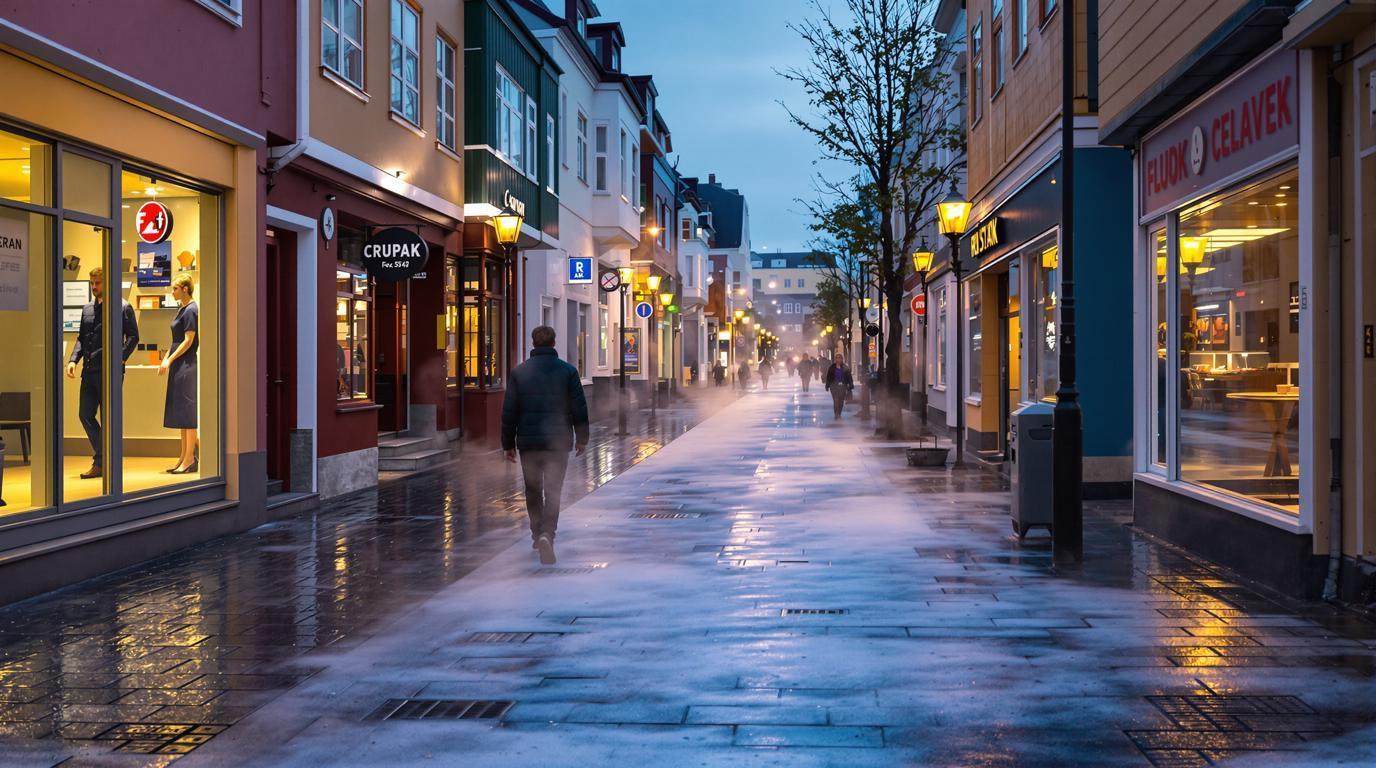While millions pack into Copenhagen’s tourist-heavy streets and Stockholm’s overpriced attractions, smart travelers are discovering a Nordic secret that locals have quietly protected for decades. Reykjavik, Iceland’s 139,000-resident capital, offers everything those crowded destinations promise—plus geothermal wonders and Northern Lights access that no other Nordic capital can match.
This isn’t just another European getaway. It’s a complete reimagining of what a Nordic capital experience should be, where steaming sidewalks heated by underground geothermal systems replace the cold concrete of other northern cities, and where authentic Viking heritage thrives without the commercialization destroying other Scandinavian destinations.
The numbers tell the story these other capitals don’t want you to know. While Copenhagen drowns in 8.8 million annual visitors crushing its 650,000 residents, Reykjavik maintains space to breathe with just 2.3 million tourists spread across Iceland’s vast landscapes.
The geothermal advantage no other Nordic capital possesses
Streets that warm themselves in winter
Walk through Reykjavik’s downtown core and you’ll notice something extraordinary—sidewalks that never freeze, heated by the same geothermal energy that powers the entire city. This natural heating system, impossible in Stockholm or Helsinki, creates a year-round walkable city center that costs 60% less to maintain than traditional heating systems.
Hot springs within city limits
While other Nordic capitals offer expensive spas, Reykjavik provides authentic geothermal pools like Laugardalslaug where locals gather daily for 40°C thermal waters. These aren’t tourist attractions—they’re community gathering spaces where you’ll experience genuine Icelandic culture alongside residents who’ve used these pools for generations.
Northern Lights accessibility that puts other capitals to shame
Dark skies just 20 minutes from downtown
Unlike Oslo or Copenhagen’s light pollution preventing Aurora viewing, Reykjavik’s compact size means Bortle Class 2 dark skies at Þingvellir National Park are just 20 minutes away. September through April, locals escape to these protected viewing areas where Northern Lights dance directly overhead—impossible from any other European capital.
Professional Aurora forecasting and local guidance
Reykjavik’s Iceland Met Office provides precise Northern Lights forecasts that help visitors time their trips perfectly. Local guides, many descended from generations of Icelandic families, share viewing spots protected from tourist buses—knowledge unavailable in larger, more commercialized Nordic cities.
Authentic Viking culture without the tourist circus
Living heritage in everyday spaces
Visit neighborhoods like Hlíðar and Vesturbær where residents maintain traditional Icelandic customs in their daily lives. Unlike Stockholm’s Old Town tourist performances, these areas offer genuine cultural immersion where you’ll hear Icelandic spoken naturally and witness authentic Nordic traditions preserved across generations.
Traditional cuisine from local fishing fleets
Reykjavik’s restaurants serve fish caught that morning by local fleets, creating farm-to-table experiences impossible in landlocked capitals. Places like Café Loki offer traditional Icelandic meals—hákarl, skyr, and lamb—prepared using recipes passed down through families rather than adapted for tourist palates.
The practical advantages that save money and stress
Walkable city center with resident-friendly pricing
Reykjavik’s compact downtown covers just 4.3 square kilometers, meaning everything is within walking distance. Local markets like Bónus offer grocery prices 30% lower than tourist areas, and 98% of residents speak English fluently—higher than any other Nordic capital.
Gateway access to Iceland’s natural wonders
While other Nordic capitals require expensive domestic flights to reach natural attractions, Reykjavik provides direct access to Golden Circle locations within 90 minutes. This eliminates the internal travel costs that make Norwegian and Swedish nature experiences prohibitively expensive for most travelers.
July 2025 offers the perfect timing for this discovery. Secret Solstice Festival celebrates the midnight sun with 20 hours of daylight, while tourist crowds remain manageable before August’s peak season. Unlike the packed summer festivals in other Nordic capitals, Reykjavik’s celebrations maintain their authentic community feel.
Skip the crowded, expensive Nordic capitals that everyone else visits. Like Cody’s authentic Western heritage, Reykjavik preserves genuine culture without commercialization. Experience the same authentic charm as Sant’Antonino’s medieval streets, but with geothermal wonders no other destination offers. Just as Koh Lanta locals protect their heritage, Reykjavik residents welcome respectful visitors to their extraordinary Nordic sanctuary.
Essential planning information for your Reykjavik discovery
What makes Reykjavik special compared to other Nordic capitals?
Reykjavik is the only Nordic capital built on an active geothermal system, providing heated streets, natural hot springs, and 100% renewable energy. Its compact size and authentic Viking heritage create experiences impossible in larger, more commercialized capitals.
When is the best time to visit for Northern Lights?
September through April offers optimal Aurora viewing, with peak months being December through February. July provides 20 hours of daylight for midnight sun experiences, though Northern Lights aren’t visible during summer months.
How does Reykjavik compare cost-wise to other Nordic capitals?
While accommodation averages €150/night compared to Copenhagen’s €120, Reykjavik’s geothermal energy reduces heating costs by 60%, and local markets offer grocery prices 30% below tourist areas in other Nordic cities.
What should I know about local customs and language?
98% of Reykjavik residents speak English fluently, higher than other Nordic capitals. Respect for geothermal areas and traditional Icelandic customs like removing shoes indoors shows cultural sensitivity locals appreciate.
How accessible are natural attractions from the city center?
Reykjavik’s compact size means Golden Circle attractions are within 90 minutes, Þingvellir National Park is 20 minutes away, and geothermal beaches are accessible by city bus—impossible convenience from other Nordic capitals.
